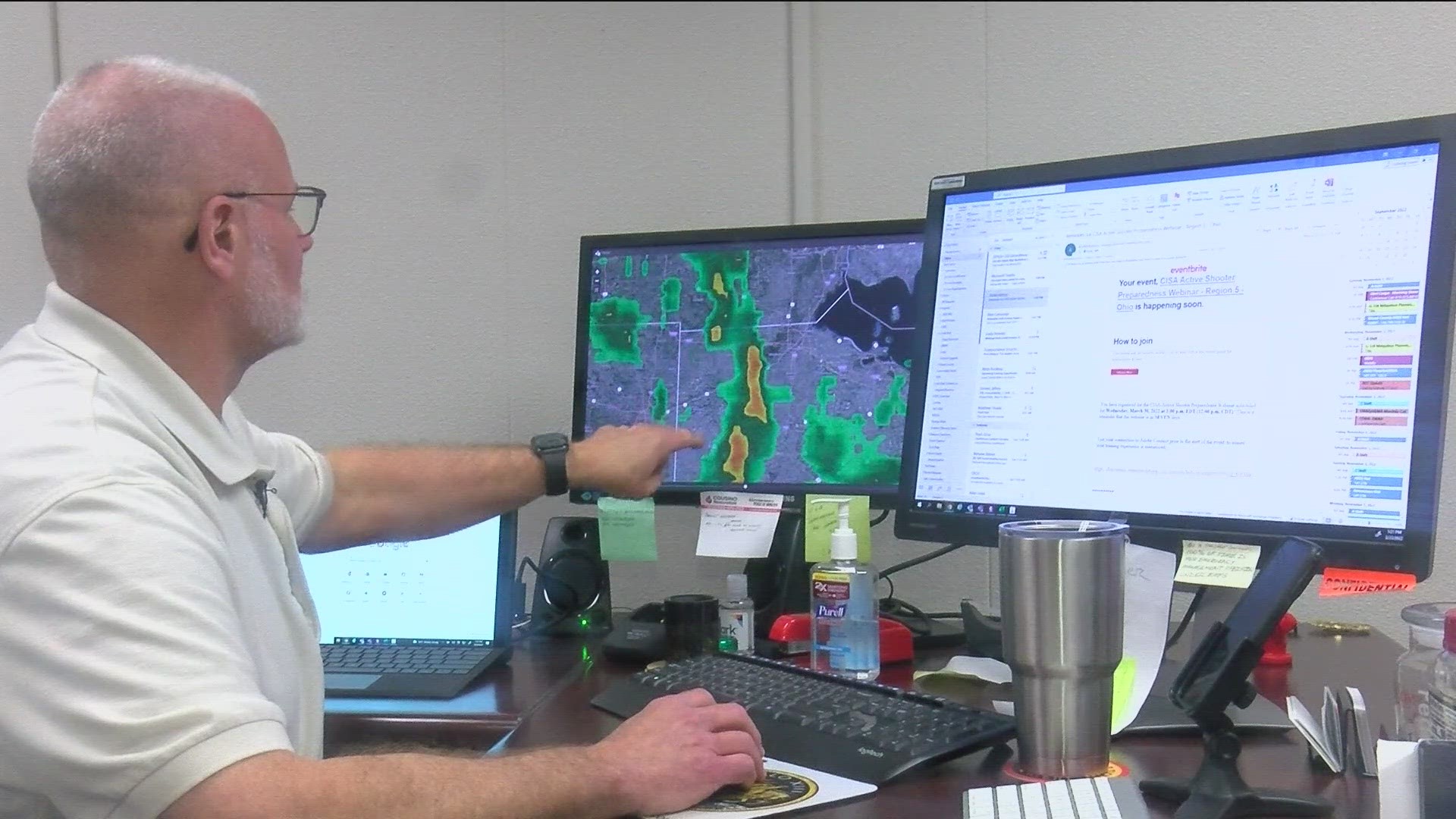TOLEDO, Ohio — Severe weather can happen any time of day, any day of the year, as evidenced by the landspout tornado that touched down in Putnam County on Tuesday.
But true severe weather season is right around the corner and the National Weather Service is offering free classes to help you be prepared.
The NWS SKYWARN program teaches the difference between a regular thunderstorm and a severe thunderstorm, how to spot distinct types of clouds, how to report different hail sizes and how to identify the difference between a funnel cloud and a tornado.
National Weather Service Cleveland is offering the SKYWARN storm spotter training courses across a portion of northwest and northeast Ohio through April.
SKYWARN spotter training is beneficial not only for people interested in becoming a trained storm spotter but also for learning about severe weather in general.
"One of the things I think most people that are interested in becoming a spotter," NWS Cleveland warning coordination meteorologist Freddie Zeigler said. "We kind of give them an idea of who we are. We give them our mission to protect life and property through our watches and warnings. We tell them why we need a spotter and why is it important to have a spotter."
During the SKYWARN training, participants learn a little about meteorology and why the weather behaves the way it does. They learn the difference between watches and warnings and what the storm prediction center does.
Social media can actually help trained spotters keep people safe during extreme weather, the NWS said. When people post information online about what they are seeing, that information can then be collected and relayed.
The National Weather Service wants to make it clear: SKYWARN isn't about teaching people to be storm chasers, but rather safe storm spotters.
If you are interested, you can find more information on the program, how to register and a full schedule on the National Weather Service's website at this link. Classes are two hours long and rotate counties each year.
MORE FROM WTOL 11 NEWS:

